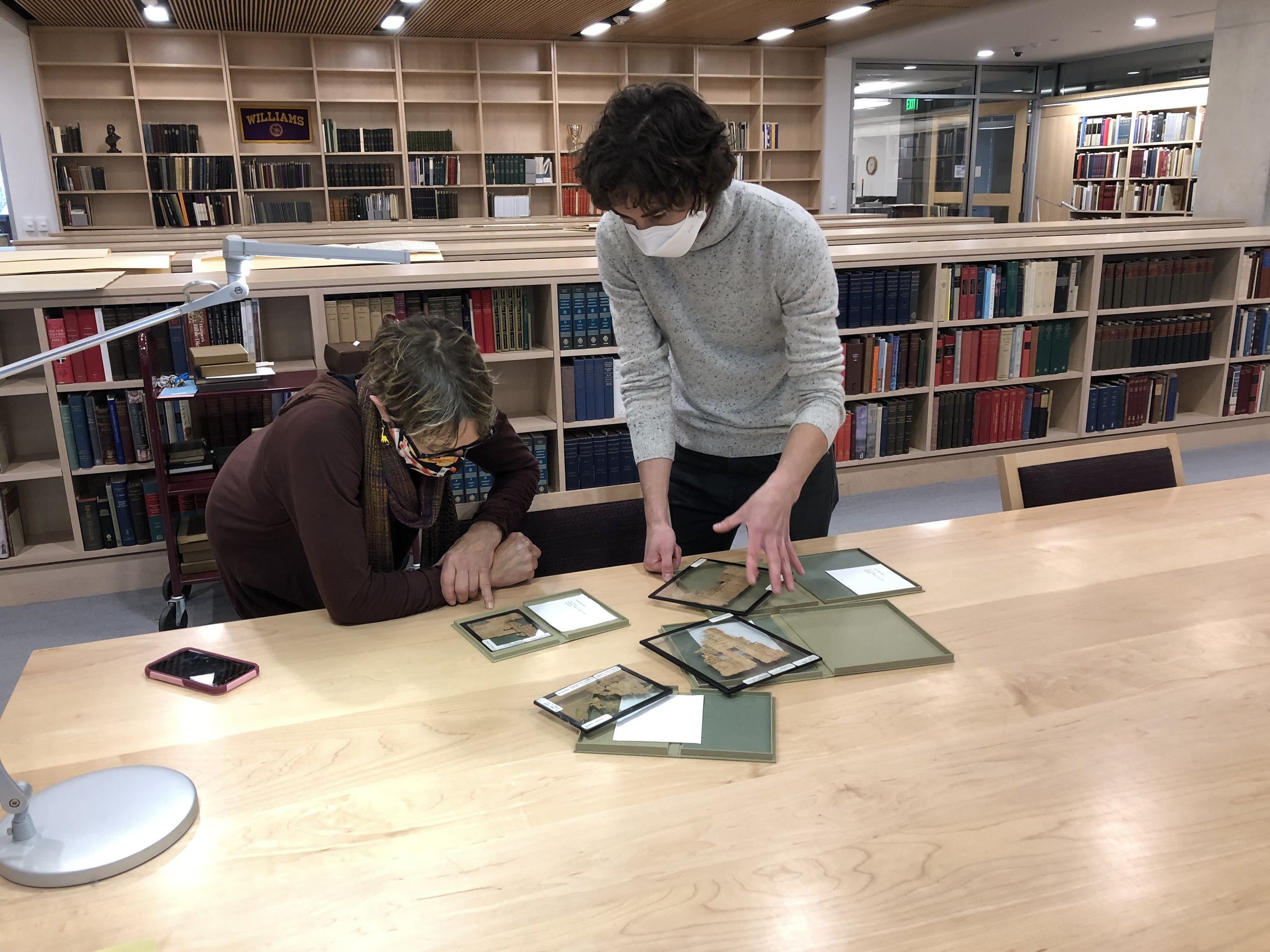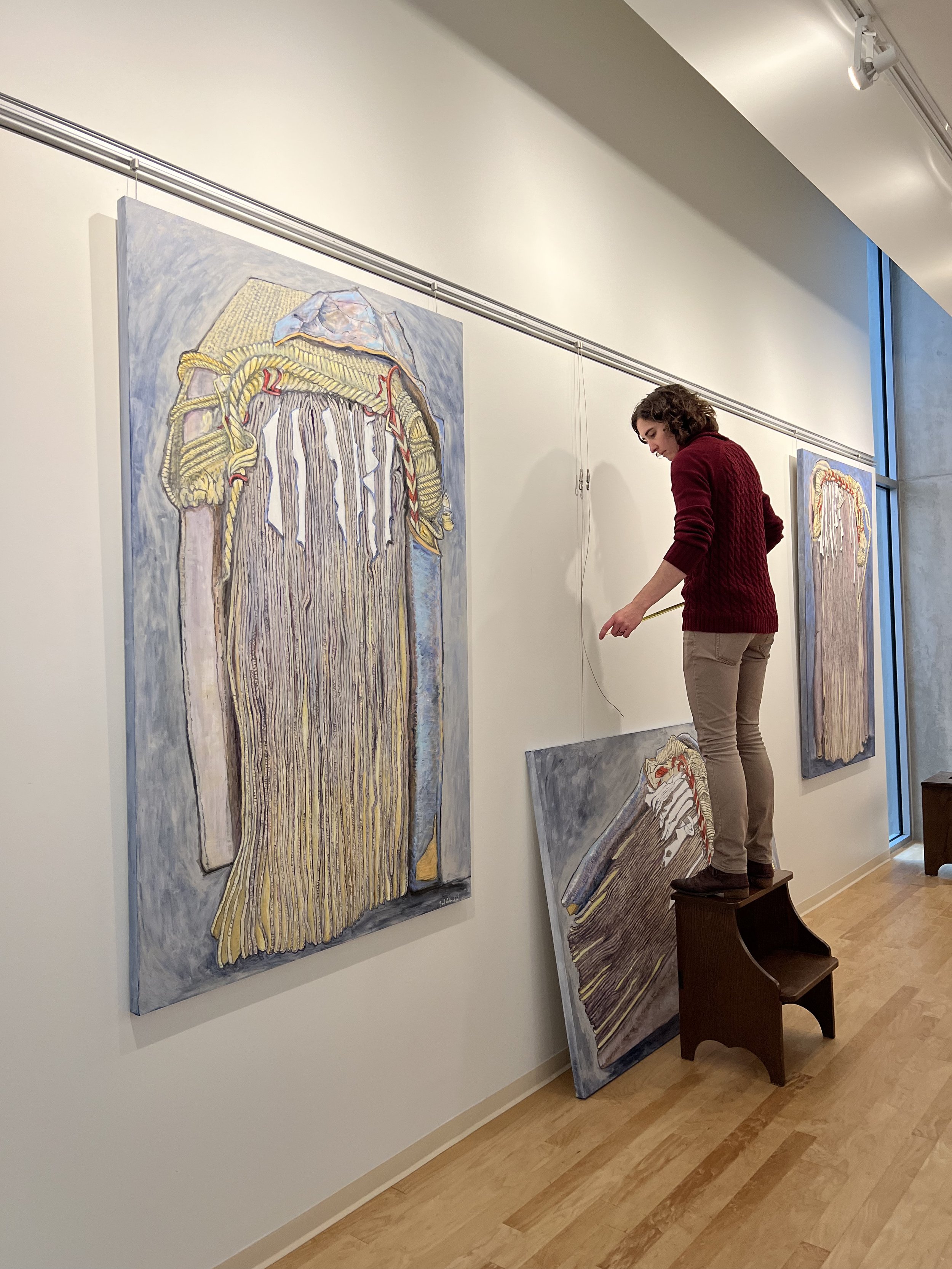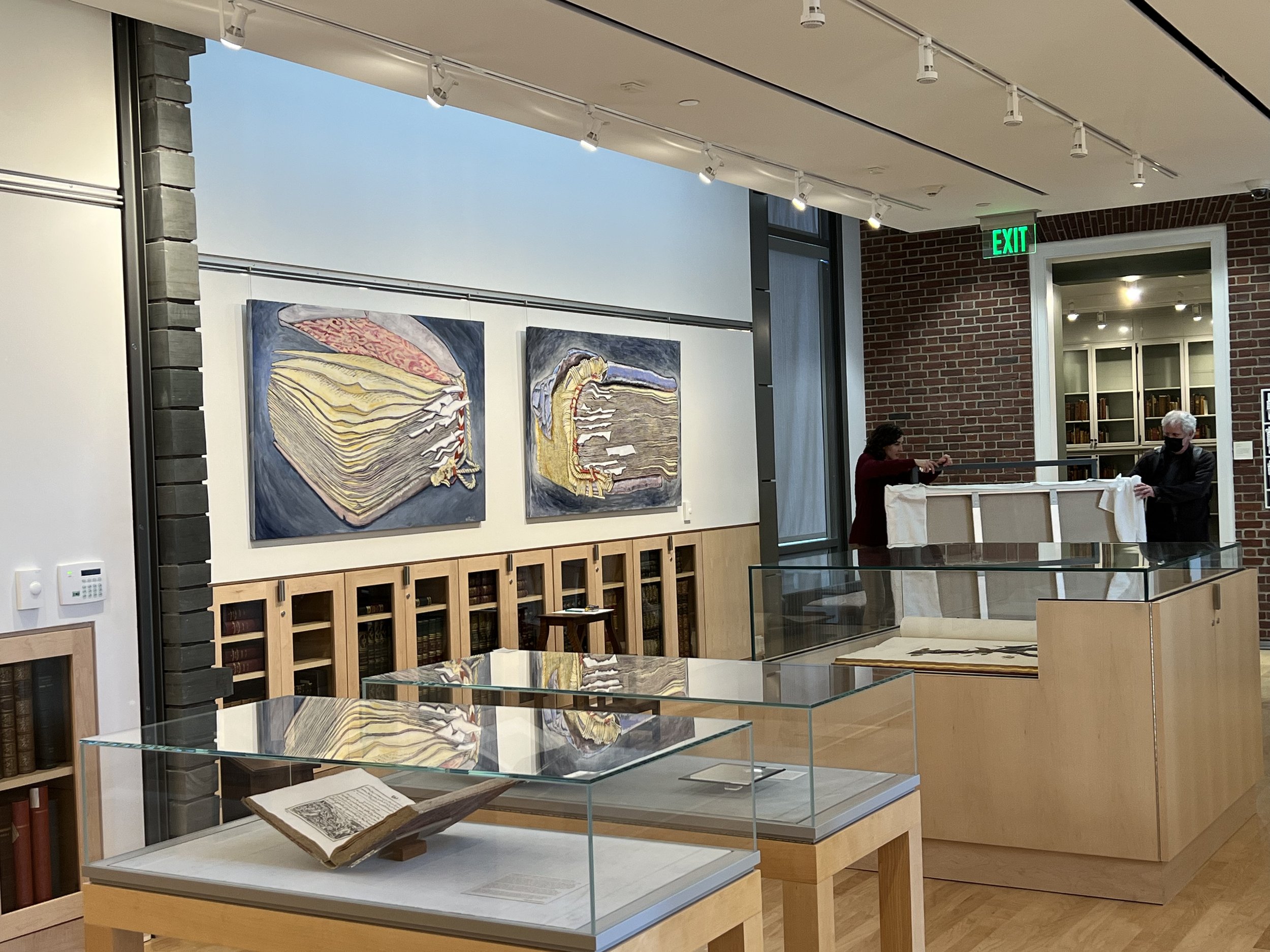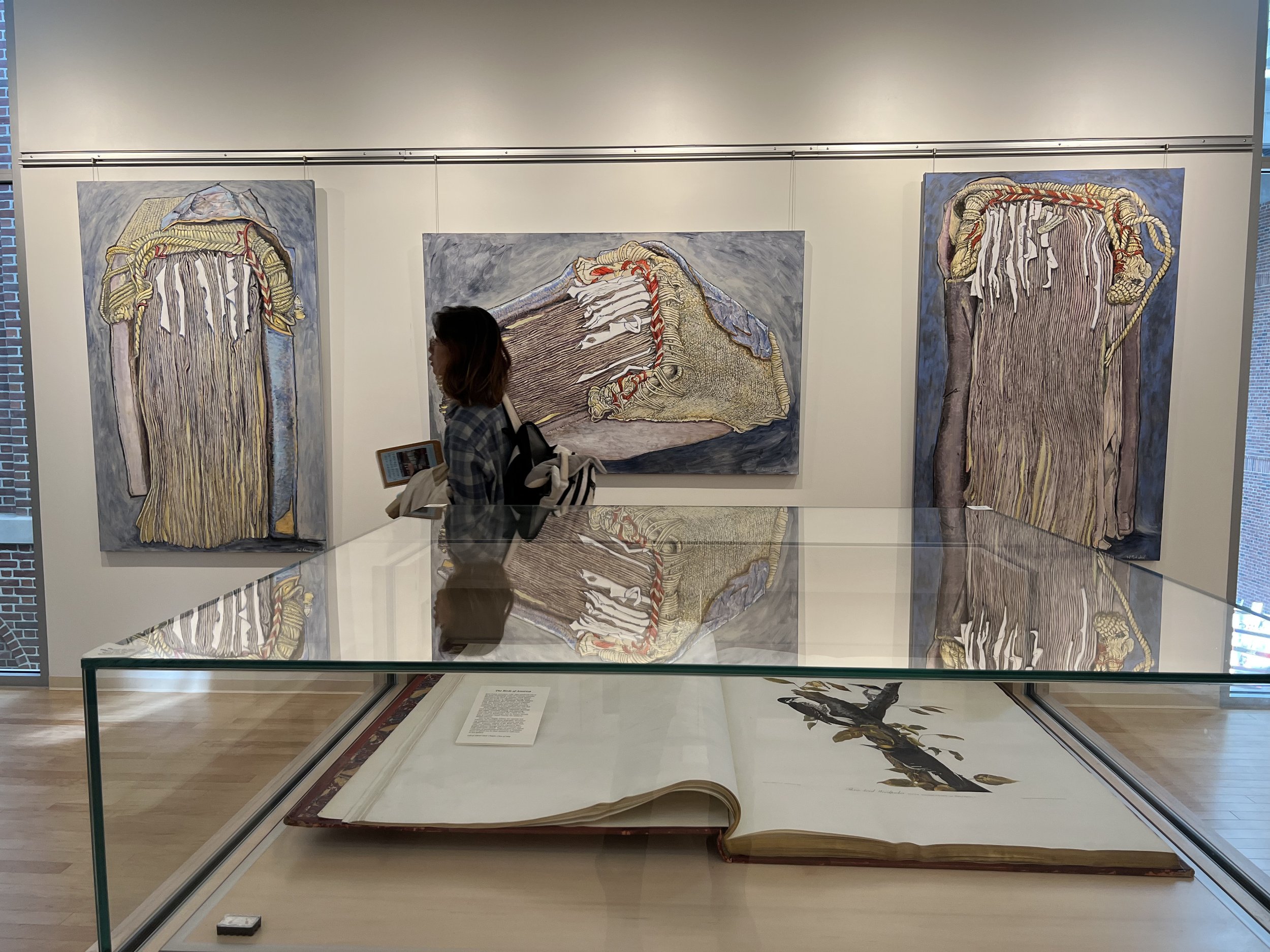Sawyer Library Special Collections Gallery, Williams College
The Codex Project: Seven paintings inspired by a 12th. c. Syriac codex
FROM CONCEPT TO INSTALLATION








Codicology: the archaeology of the book. While we normally think of the book in terms of its content, this project teases that notion.
Project: paint seven portraits, seven explorations inspired by a single Syriac codex. One dark February, Williams Special Collections Librarian Anne Peale laid this ancient book in a cradle and peeled apart the crackling parchment pages while Art Historian Thelma Thomas aimed a flashlight between the pages, illuminating.
Studio Thoughts: Why is a book “bound” and not “clothed”? Perhaps the content—the text—wants to explode beyond its protective cover. It must be restrained. Bondage. Time is unraveling the binding and undressing the book. Burlesque. I begin the first portrait of the codex in autumn when the annual cyclical reading of the Torah scroll is begun anew. A scroll is linear, cyclical. You open at the beginning and continue unrolling until you come to the end. The library of Alexandria held scrolls, not codices. Unlike a scroll, a book or codex can be entered anywhere. The binding of the codex is a liminal space between the ordinary world and the world of the text. You open the binding, turn to a page, and dive in. You may leave behind a white paper bookmark to signal that you were there. You stand before a painting of a book large enough to crawl inside of. You could hold the subject of that painting in your hand turning it over. Reading the book is temporal; upon entering, you leave this world of a thousand disparate images. Can you allow the act of viewing the painting to be as immersive?






